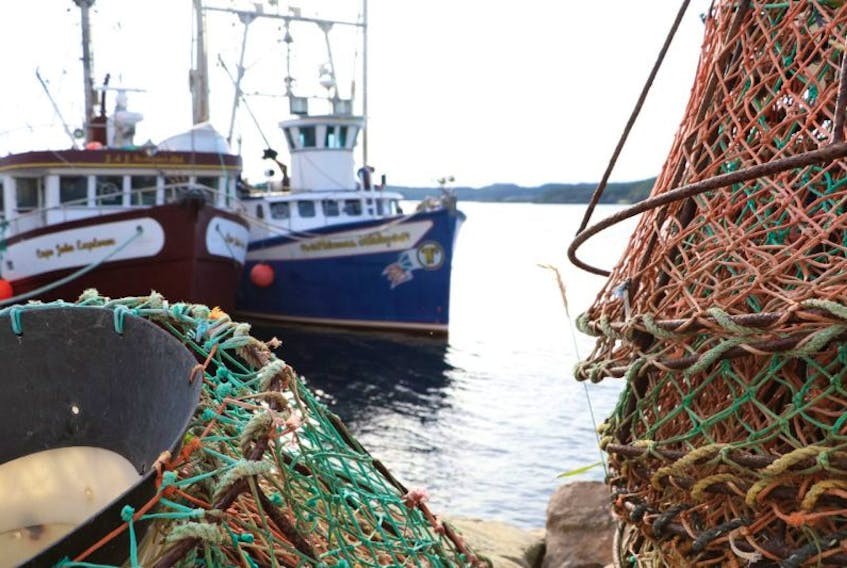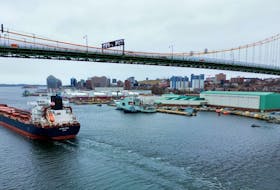
News over the past couple of months of continually declining snow crab and northern shrimp stocks in waters off Newfoundland and Labrador’s coasts have sent waves of concern washing over the fishing industry.
The expected cuts this spring to crab and shrimp quotas have fisherman all around the province on edge. And there’s little else to fill in the gap — the northern cod stocks, while showing signs of strong growth in recent years, are still not ready for a major commercial fishing effort.
Lying in the balance are huge investments in vessels and fishing gear, work for boat crews and plants, and the survival of rural areas of the province.
But while scientific stock assessments of crab and shrimp reveal a dismal picture, many fishermen are not so sure that picture is accurate.
In fact, many say they are seeing things a bit differently out on the water, and see some hope for the fishery of the future if fishermen are willing to branch out into other potential commercial species.

Nelson Bussey, a Port de Grave fisherman who chairs the Fish, Food and Allied Workers/Unifor fishing zone 3L shrimp committee, said while fishermen have witnessed declining crab and shrimp stocks over the years, the downturn is not as devastating as the scientific stock assessments show.
“When it comes to shrimp, in 2016 we had our best catch rates ever,” Bussey said. “And then when the cod moved in over the grounds, we had our worst catch rates, within a day or two. The problem with the shrimp assessment is that when DFO does the survey, it’s at the time the cod have moved in and dispersed the shrimp. There is so much cod on the go now, it is taking control.
“When the cod moves in the shrimp disperses up through the water column, and the catch rates fall off. Our trawls only got about a 15-foot lift from the bottom. That’s when (DFO) does its survey in the fall of the year when the cod moves in. So, basically, the survey is not reflecting the true amount of shrimp.”
As for crab, Bussey said, catch rates were also good in 2016. He said fishermen do not believe the health of the crab resource is as dismal as the scientific stock assessment indicates.
The Department of Fisheries and Oceans stock assessment for snow crab released on Feb. 27 showed a decline of 40 per cent in 2016 from 2015 — and a decline of 80 per cent since 2013.
Bussey noted that while fishermen realize there will be another quota reduction this year, prices are expected to be up, which will help offset some of the losses.

On Feb. 20, DFO released the northern shrimp assessment which showed that shrimp stocks in shrimp fishing area 6, off the island’s northeast coast and southern Labrador, had reached their lowest level in recorded history. The stock assessment showed only 104,000 tonnes of fishable biomass in 2016, down 25 per cent from 2015 — and down from 785,000 tonnes since 2006.
The female spawning stock declined 27 per cent.
“We’ve been fishing shrimp now for 20 years and we’ve gradually seen this unfold,” said Bussey, who fishes out of his 65-foot steel boat the Eastern Princess II.
“We’ve been watching the (shrimp’s) behaviour. As the cod comes back, the shrimp are behaving different, migrating different.
“Last year, 3L fisherman had roughly 45,000 pounds per boat and this year we’ll be down to roughly 20,000 pounds. And four or five years ago, we had 500,000 per boat (250,000 in SFA 7 and 250,000 in SFA 6). You will see boats not gear up for shrimp this year because they won’t be able to afford to.”
He said fishermen have been presenting their views in a number of meetings since the assessments were released.
In the meantime, he said the days of fishermen going after just crab and shrimp are over if they want to make a decent living from the fishery.
In addition to shellfish, fishermen are going to have to adapt, once again, to fishing a number of different species and developing fisheries for underutilized stocks.
“We are going to have to get into fishing so much turbot, so much cod, redfish, monkfish and whatever you can get at,” he said. “I fished turbot in 2016, the first time in 15 years. So, hopefully, we can find a way to make a go of it.”









